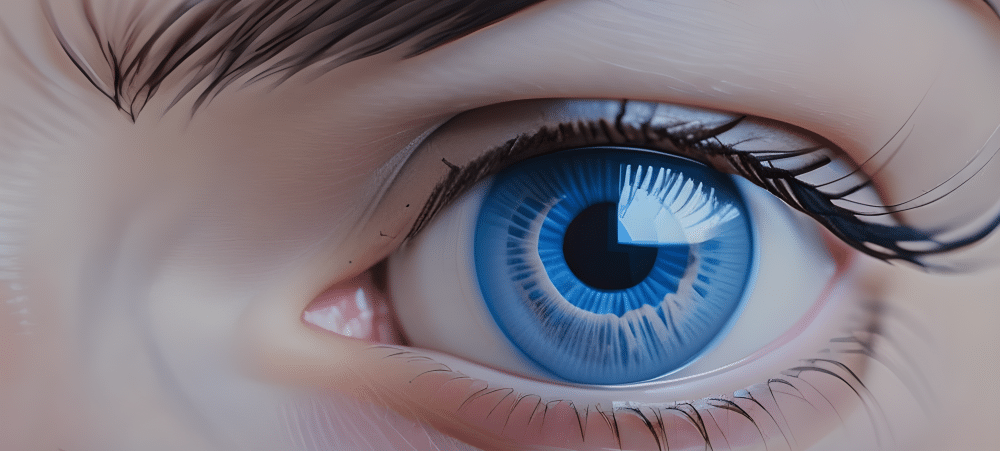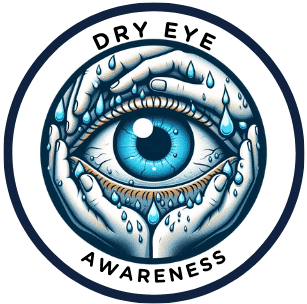
Are you suffering from dry eyes but getting nowhere with treatment? You might be believing dangerous myths that are keeping you from real relief.
Hi, I’m Dr. Horwitz, and in my 20+ years treating dry eye patients, I’ve seen how these persistent myths can actually make symptoms worse and delay proper treatment. Today, I’m debunking the 8 most dry eye myths that could be harming your vision right now.
🎯 What you’ll learn in this guide:
- Why “just drink more water” could be wasting your time
- The shocking truth about artificial tears that most doctors won’t tell you
- Why your watery eyes might actually mean you have severe dry eye
- The #1 mistake that’s keeping your dry eyes from healing
⚠️ Important: If you’re experiencing persistent eye discomfort, this information could prevent serious complications like corneal damage. Let’s dive in.
What Is Dry Eye Syndrome? (The Truth Most People Don’t Know)
Dry eye syndrome isn’t just “a little dryness” – it’s a serious medical condition affecting over 16 million Americans where your eyes either don’t produce enough quality tears or tears evaporate too quickly.
Your tear film has 3 critical layers:
- Oil layer (prevents evaporation)
- Water layer (provides moisture)
- Mucus layer (spreads tears evenly)
When any layer is disrupted, you get the uncomfortable symptoms that can progress to vision-threatening complications.
Recognize These Warning Signs:
- ✅ Gritty, sandy feeling in your eyes
- ✅ Burning or stinging sensation
- ✅ Excessive tearing (yes, watery eyes can mean dry eye!)
- ✅ Blurred vision that clears with blinking
- ✅ Eye fatigue, especially with screen time
- ✅ Light sensitivity
📊 Shocking statistic: Studies show untreated dry eye increases your risk of corneal infections by up to 300%.
Myth #1: “Dry Eye Isn’t Serious – It’s Just Annoying”
❌ DANGEROUS MYTH
This is perhaps the most harmful misconception I encounter. Patients often say, “It’s just dry eyes, Doc,” but here’s what they don’t realize:
Untreated dry eye can cause:
- Corneal ulcers and scarring
- Permanent vision loss in severe cases
- Chronic pain that impacts quality of life
- Increased infection risk (your tears are your first line of defense)
✅ THE TRUTH: Dry eye is a progressive disease. Early treatment prevents complications and preserves your vision long-term.
Myth #2: “Just Drink More Water to Fix Dry Eyes”
❌ COMMON MYTH
I hear this daily: “My mom told me to drink more water for my dry eyes.” While hydration matters for overall health, it won’t fix your dry eye problem.
Here’s why:
- Your tears are produced by specialized glands, not your general hydration status
- Most dry eye cases involve meibomian gland dysfunction (blocked oil glands)
- The oil layer prevents tear evaporation – water can’t fix oil gland problems
✅ THE TRUTH: Proper dry eye treatment targets the specific layer of your tear film that’s problematic. Sometimes it’s inflammation, sometimes it’s gland dysfunction, sometimes it’s both.
Myth #3: “Only Old People Get Dry Eye”
❌ OUTDATED MYTH
Shocking reality: I’m seeing more dry eye patients in their 20s and 30s than ever before.

Why younger people are getting dry eye:
- Screen time explosion (average 7+ hours daily)
- Reduced blink rates while focusing on devices
- Indoor air conditioning and heating
- Contact lens overuse
- Autoimmune conditions affecting younger populations
📱 Digital eye strain fact: Your blink rate drops by 60% when looking at screens, leading to faster tear evaporation.
✅ THE TRUTH: Age is just one risk factor. Environmental and lifestyle factors are often more important, especially for younger patients.
Myth #4: “Artificial Tears Fix Everything”
❌ EXPENSIVE MYTH
This myth costs my patients hundreds of dollars annually on ineffective treatments.
Why artificial tears often fail:
- They only provide temporary lubrication
- They don’t treat underlying inflammation
- They can’t fix meibomian gland dysfunction
- Some preservatives actually worsen symptoms long-term
Patient example: Mark spent $300+ annually on artificial tears with minimal relief. After proper diagnosis and treatment targeting his MGD, his symptoms improved 90% within 6 weeks.
✅ THE TRUTH: Effective dry eye treatment requires identifying and treating the root cause, not just masking symptoms.
Myth #5: “Dry Eye Only Happens in Dry Climates”
❌ GEOGRAPHIC MYTH
Surprising fact: Some of my worst dry eye cases live in humid climates.
Indoor environmental factors matter more:
- Air conditioning and heating systems
- Poor air quality and pollution
- Allergens triggering inflammation
- Low humidity indoors (often 10-20%, when you need 40-50%)
✅ THE TRUTH: Your indoor environment and lifestyle factors often matter more than your geographic location.
Myth #6: “Contact Lenses Always Make Dry Eye Worse”
❌ OUTDATED MYTH
Modern reality: New contact lens technologies can actually help some dry eye patients.
Game-changing options:
- Scleral lenses that vault over the cornea
- Moisture-retaining materials in daily disposables
- Specialty lenses for severe dry eye cases
Success story: Jennifer couldn’t wear contacts for 3 years due to dry eye. With the right specialty lenses and treatment plan, she’s now comfortable wearing them 12+ hours daily.
✅ THE TRUTH: The right contact lenses, properly fitted by an eye care professional with dry eye experience, can be part of an effective treatment plan.
Myth #7: “Dry Eyes Should Feel Dry”
❌ CONFUSING MYTH
Plot twist: Many of my most severe dry eye patients have excessively watery eyes.
Why this happens:
- Poor-quality tears trigger reflex tearing
- Your eyes overproduce watery tears to compensate
- These “reflex tears” don’t provide proper lubrication
- Result: Watery eyes that still feel dry and irritated
✅ THE TRUTH: Watery eyes can be a sign of severe dry eye syndrome requiring immediate treatment.
Myth #8: “Home Remedies Cure Dry Eye Completely”
❌ DIY MYTH
Pinterest and TikTok aren’t medical advice. While some home remedies provide temporary relief, they rarely address the underlying problem.
Home remedies that can help (temporarily):
- Warm compresses (5-10 minutes, 2x daily)
- Humidifiers (maintain 40-50% humidity)
- Omega-3 supplements (2000mg+ daily)
- Eyelid hygiene with gentle cleansers
⚠️ Warning signs you need professional treatment:
- Symptoms persist despite home care
- Vision changes or eye pain
- Discharge or redness
- Symptoms interfering with daily activities
✅ THE TRUTH: Home remedies can support professional treatment but rarely cure dry eye completely.
The Dr. Horwitz Approach: Evidence-Based Dry Eye Treatment
At our practice, we use advanced diagnostic tools to identify your specific type of dry eye:
- Comprehensive dry eye evaluation (not just a basic eye exam)
- Tear film analysis to measure quality and quantity
Our most effective treatments include:
- Prescription anti-inflammatory drops (Restasis, Xiidra, Cequa)
- In-office meibomian gland expression therapy
- Punctal plugs for tear retention
- Customized treatment protocols based on your specific needs
Frequently Asked Questions About Dry Eye
How long does dry eye treatment take to work?
Most patients see improvement within 2-4 weeks, with continued improvement over 3-6 months. Severe cases may take longer.
Can dry eye be cured permanently?
Dry eye is usually a chronic condition that requires ongoing management, but most patients achieve excellent symptom control with proper treatment.
Is dry eye treatment covered by insurance?
Many dry eye treatments are covered by insurance, including prescription medications and certain in-office procedures.
When should I see an eye doctor about dry eye?
If you have persistent symptoms despite over-the-counter treatments, or if dry eye is impacting your quality of life.
Can diet affect dry eye?
Yes! Omega-3 fatty acids, staying hydrated, and reducing inflammatory foods can support dry eye treatment.
Take Action: Your Next Steps for Dry Eye Relief
- Search for “dry eye doctor near me” or “eye care professional with dry eye experience”
- Look for providers with advanced diagnostic equipment
- Ask about their experience with complex dry eye cases
Key Takeaways: Stop Believing These Dangerous Myths
✅ Dry eye is a serious medical condition requiring professional treatment ✅ Drinking water alone won’t cure dry eye – you need targeted therapy ✅ All ages can develop dry eye – it’s not just an “old person” problem ✅ Artificial tears are just the beginning – not the complete solution ✅ Environment matters more than climate for most patients ✅ Modern contact lenses can help when properly fitted ✅ Watery eyes often mean severe dry eye – get evaluated immediately ✅ Home remedies support treatment but rarely cure the condition
Remember: Every day you delay proper treatment is another day of discomfort and potential complications. Don’t let these myths keep you from the relief you deserve.
Disclaimer: This information is for educational purposes only and doesn’t replace professional medical advice. Always consult with an eye care professional for personalized treatment.
